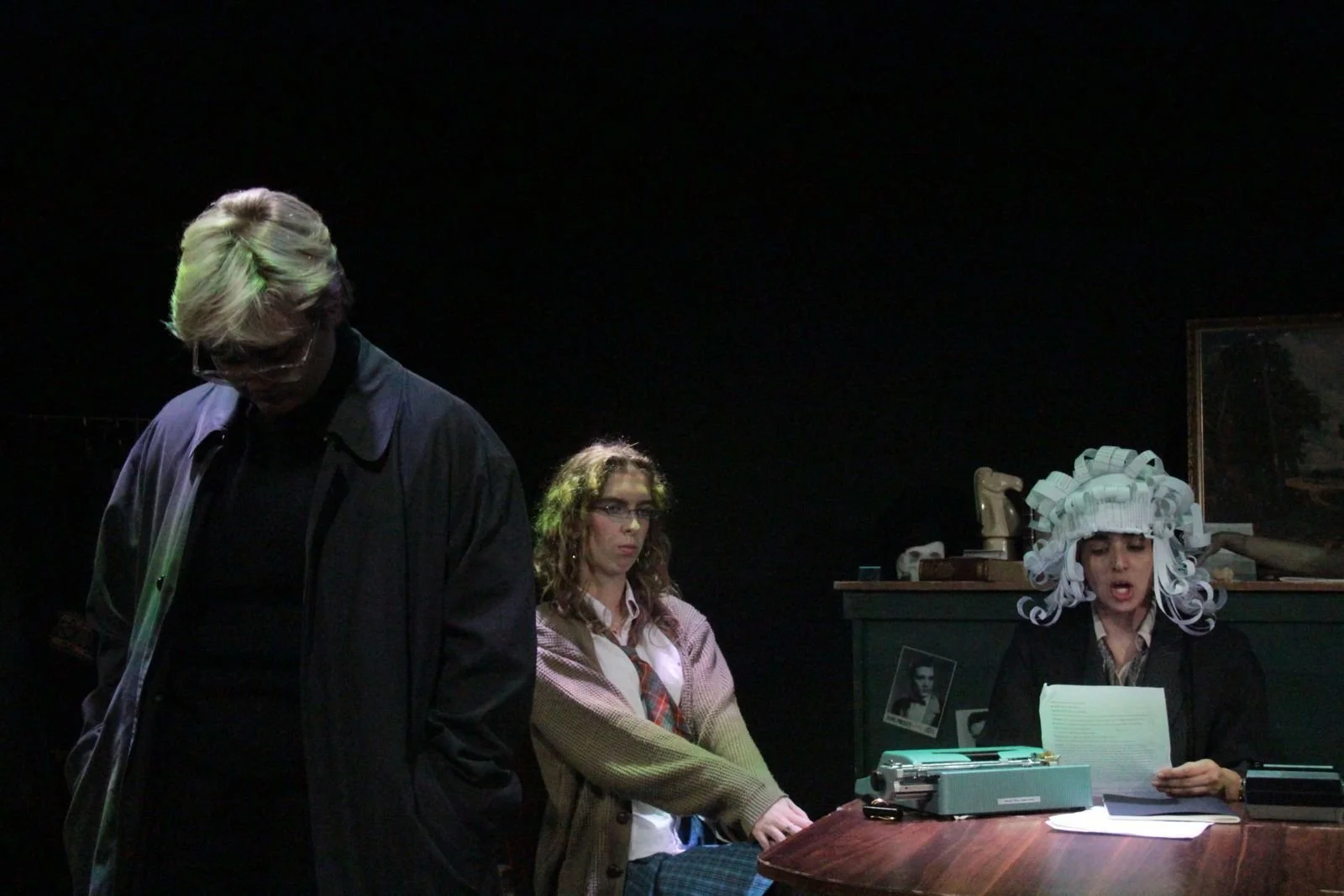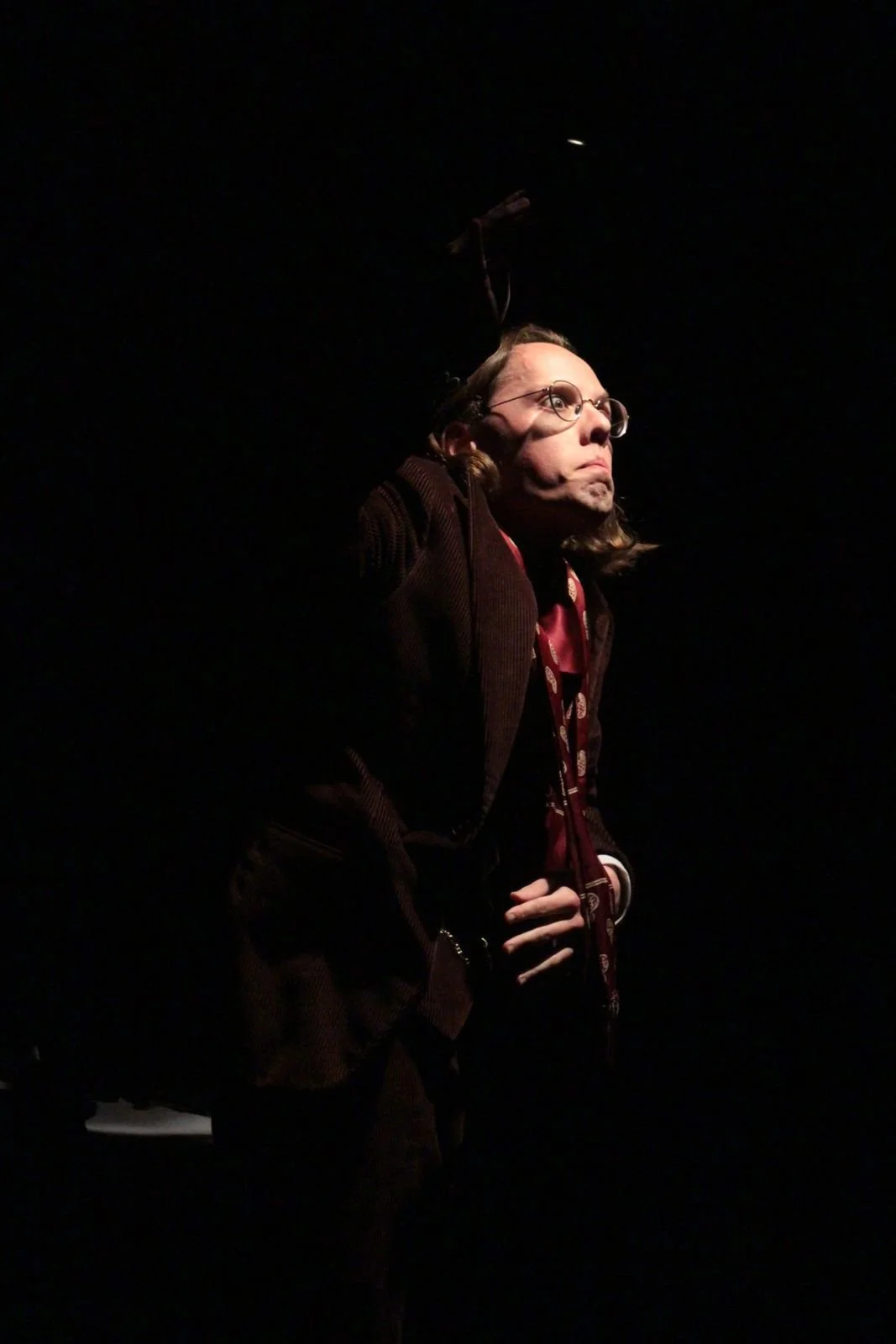Revu To What End
“To What End”
So, we are halfway through the term, and I am on my way to my sixth show. A pleasant surprise of the term so far has been specific invitations to review various productions; although the sheer amount of theatre being put on every week in Oxford does lead to the inevitable frustration of not being able to catch everything one wants to see. Still, I am keen not to miss B Squared Productions’ To What End, a new play written and directed by "the Billys," those being Billy Skiggs and Billy Hearld (a part of our small team for The Lover, a play put on last February).
This is a piece of comic meta-theatre centred on a neurotic writer, Bernard (Tomasz Hearfield), and a grandiose, past-his-prime director, Albie (Peregrine Neger), who have lost the final page of their play, set to debut imminently, and must decide how it ends. During a lover's spat mid-rehearsal, the "real-life" couple in the play's leading roles, Husband (Luke Carroll) and Wife (Georgina Cotes, reuniting with our Lover crew), seem to shoot each other offstage, incidentally framing Bernard and Albie for their deaths (Sanaa Pasha and Madison Howarth then arrive as detectives, judges and stenographers). None of this is particularly important, though, as by the time we get to the third and final scene it is obvious that this script is more interested in theatre itself than in telling a conventional narrative with it. Characters realise they are in a play, forget their lines, quote a lot of Macbeth, and agonise over the play's eponymous question (to which no answer is given): to what end do we perform theatre in the first place?
Perhaps appropriately for a play about literature, this is very much an exercise in writing rather than slick directing. Much of the production (excepting a few very effective, tightly-choreographed moments) sees 4-6 actors generally standing/sitting around, letting Hearld and Skiggs' script do most of the leg-work (at times, you could imagine it as a radio play). There is a lot of aimless feet-shuffling; actors sit directly in front of each other and hide their cast-mates; the cast don't quite come in quick enough on their cues, which lets the pace drop a little too much; some lines get lost: the directing can sometimes feel a little sloppy. Overall, more rehearsal-time and attention to blocking would significantly elevate the production.
These are issues of polish, but they far from negate the effectiveness of the Billys' script, which is filled with all the witty meta-theatrical gags one could possibly hope for ("'Amateur.' Fuelled by passion and little else, least of all talent”). Literary references abound, and works from John McCrae to Shakespeare are twisted for the comedic purposes of the writers (these simple allusions are designed so that everyone will "get" them, but who's to say they should be pretentious and obscure?). Laughs are frequent as the narrative bounces around, suddenly halts, doubles back on itself. One highlight is the use of a tape recorder which repeats dialogue from earlier scenes, dramatised here by Billy Skiggs rushing onstage in a t-shirt reading "TAPE," and verbally recounting previous lines. At times, the script does struggle to keep things moving - scenes like this work a lot better when every character represents a unique, consistent perspective on a topic (e.g. theatre), which we never quite get here. In general, though, To What End is an entirely satisfying, sharp, and entertaining piece of existential meta-theatre.
“To What End”
It has also been put into the hands of performers who each display a keen sense of character. Although there are moments when I wish these vividly-drawn caricatures were embodied with a little more precision and energy (perhaps a consequence of my own love of overindulging in heightened characters), they always remain clearly-defined and amusing. Carroll and Cotes are hilarious as they switch between beautifully-accented post-War theatrical archetypes ("Oh, darling do shut up and kiss me") and struggling actors ("Darling we're actors. We do it for the 'love of the game'"), and occasionally blur the lines between them. Their childish bickering when the Husband criticises the Wife's acting ability (evoking fond memories of the many hours Cotes and I were stuck together rehearsing The Lover) is a little ironic - Cotes' performance seems the production's most confident and rehearsed, and they are perhaps a little wasted in a smaller part.
Most of the laughs, though, come from Neger's almost Richard-Griffiths-in-The-History-Boys-esque turn as Albie, a loquacious theatre luvvie. Although it is sometimes too difficult to tell whether their dithering ad-libbing is genuine or part of the character, Neger's performance lovingly invokes the kind of slightly self-important but oddly charming “theatre-people” one might find teaching Drama at a public school. This works for great comedic effect (“I avoid the amateur playhouses”), alongside a few more introspective moments (“I’m tired, Bernard, my head hurts. All this theatre talk”).
Finally, the production design here is also to be celebrated. The Billys’ maximalist post-War set is endearing, despite the appearance of some familiar Oxford-University-Technical-Theatre-Society-store rentals. Furnishings are covered in compendiums of T.S.Eliot works, photographs of Elvis, enlarged chess pieces, and there is more than enough visual flair to satiate our eyes. More outstanding is the costume design of Hearld and Maya Herz, which (beyond furthering the sense of a Lover reunion) gives a pitch-perfect silhouette to each character. We find Cotes’ Wife in a beautifully posh fur coat and pearls, Carroll’s Husband in white tie, Hearfield’s Bernard in a turtleneck and trench-coat suggestive of a pretentious 30-year-old tortured artist, and Neger in a glorious deep red corduroy three-piece suit which imbues Albie with all the old-fashioned grandiose style he requires. Pasha is also ingeniously transformed into a Judge with the aid of a mock periwig made from scribbled-on paper, which clearly highlights the play’s questions regarding the creation of literature and what kind of judgements we should be making about it.
After watching a piece of student-written theatre, one is sometimes left thinking, "Well, that was a good production, but the writers ought to take the script back to the workshop." Tonight, I somewhat feel inclined to say the opposite - the Billys have actually given us a script that satisfies its comedic and meta-theatrical goals, but it could be elevated with more attentive, precise directing. That being said, I don't want to neglect the fact that this production gets plenty of things right. For now, I must finish by expressing my sincere hope that the production history of To What End will not stop here. With a few edits, a piece of writing this witty and creative might deserve to be performed "tomorrow and tomorrow and tomorrow."
3.5/5
Review by George Loynes
The link to George Loynes’s review blog is: https://roomwithreviewblog.blogspot.com/?m=1&fbclid=PAZXh0bgNhZW0CMTEAAadKaD9DWn-5mwBnPczPWh3KXF0Wm5MTE_D9WbXEiWAbpuhhg9yNdnyYWKaYSg_aem_MX4-paKRuQoHXi7vgFXpPw
“To What End”





